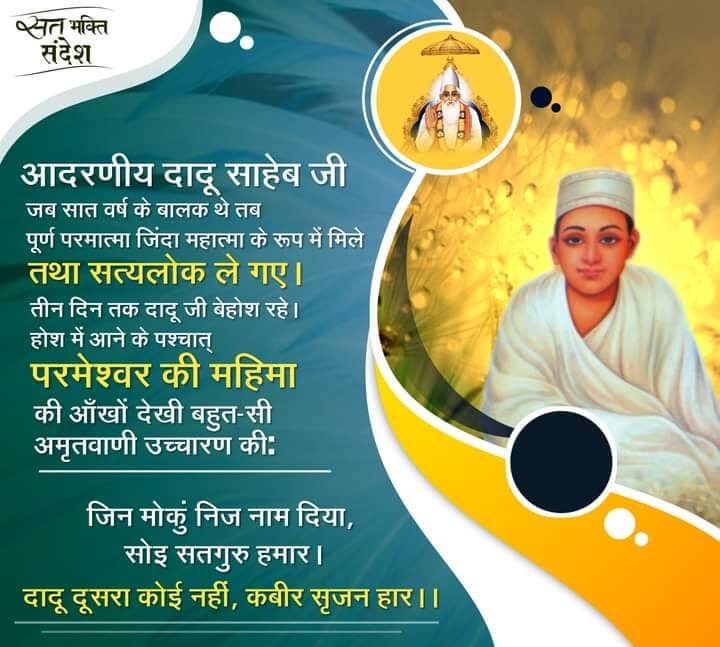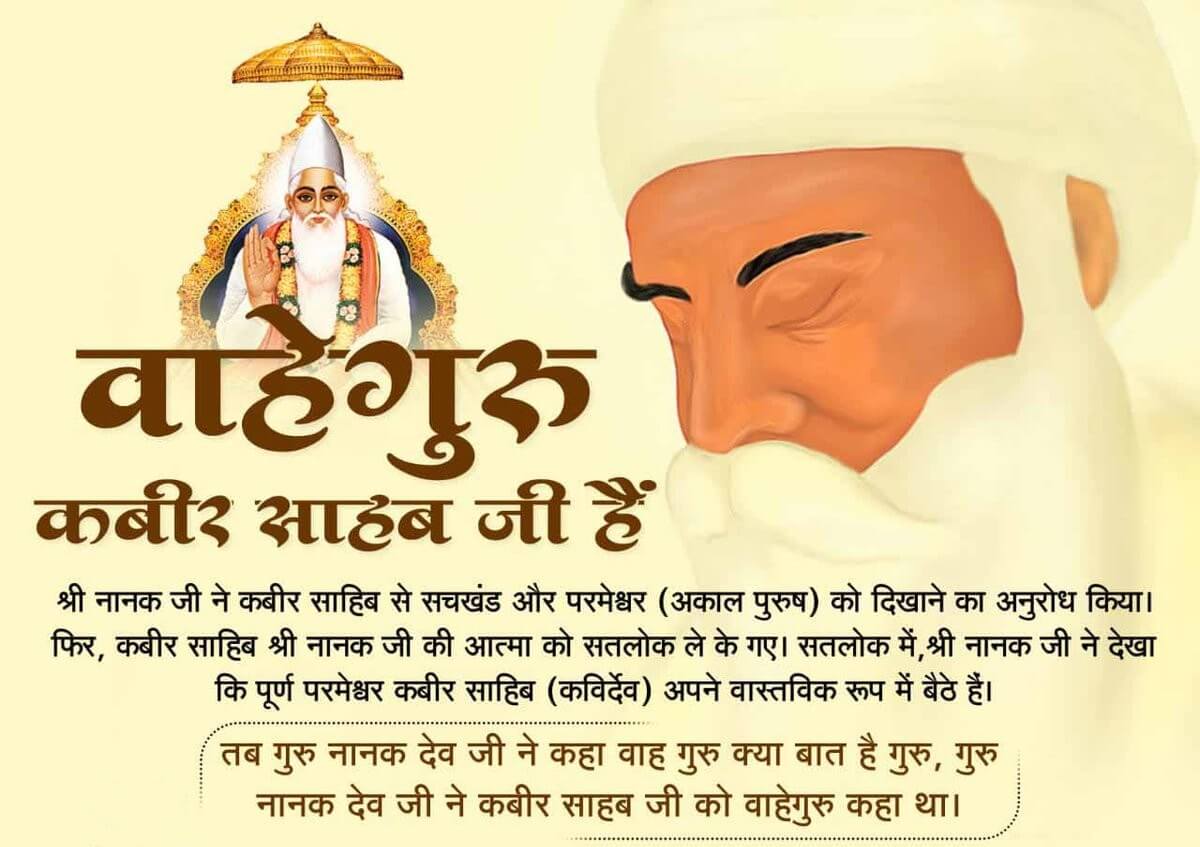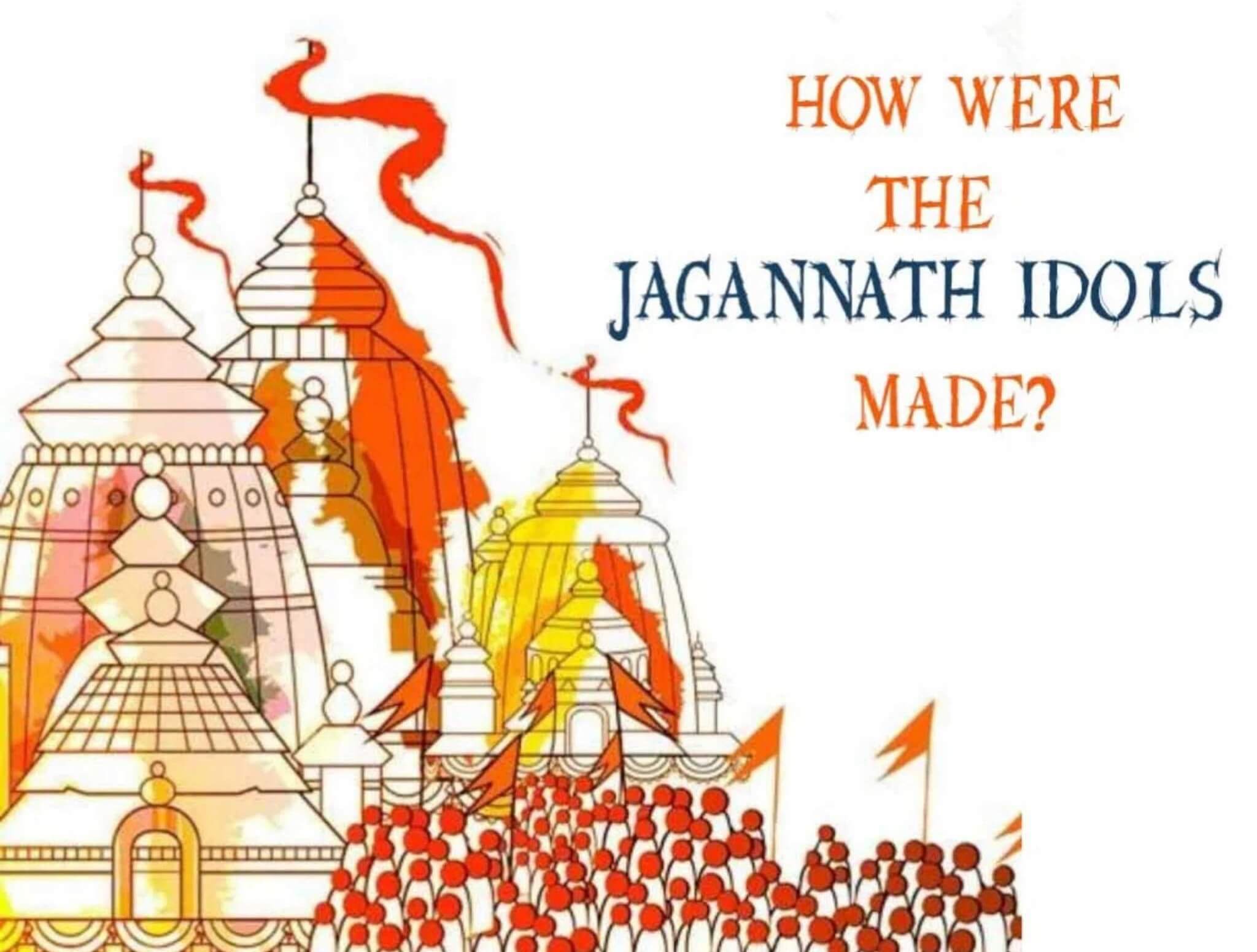Summary of the Chapter Bhavataran Bodh
The 19th chapter of Kabir Sagar, titled Bhavataran Bodh, is located on page 42. This chapter does not contain new knowledge but reiterates teachings from earlier chapters. Through Dharmdas, Kabir Parmeshwar provides the following guidance to the spiritual community.
A seeker should engage in worship with a sincere heart, termed Bhav Bhakti. Respect and care should be shown to saints and virtuous souls, offering them food and water with faith and reverence.
Those practicing Hath Yoga or limited to physical postures without receiving the Saar Shabd from a Complete Guru cannot attain liberation from worldly existence.
Donations made without receiving the true mantra from a Satguru do not lead to liberation. The fruits of such donations are reaped in the next life, and it is not guaranteed that this will be in a human birth. These rewards may come in the form of births as animals like dogs, horses, cows, or buffaloes. However, if someone has received the true spiritual practice from a Satguru, engages in devotion, and also donates, they achieve liberation. Additionally, the fruits of their donations are granted as needed in their current life. If liberation is not achieved for some reason, they are reborn as humans and receive the rewards of their donations in that life.
The Benefits and Drawbacks of Pilgrimage Bathing
Note to Readers: Certain verses in Kabir Sagar have been altered or interpolated by followers of Kabir Panth under Kaal's influence. For example, on page 43 of this chapter, it is written that those who bathe at pilgrimage sites gain beautiful bodies and are born in high castes, such as Brahmins or Kshatriyas. This interpretation is entirely incorrect.
As previously explained, Kabir Parmeshwar granted true knowledge and spiritual insight to Saint Garibdas Ji (from Chhudani village, Jhajjar district, Haryana). Through divine vision, Saint Garibdas Ji recorded the true wisdom.
What does one truly gain from pilgrimage bathing?
Gareeb, teerth baat chalai jo praani. soto janm-janm urjhaani.
Jaa teerth par kar hai daanam. taa par jeev marat hai arabanam.
Gote-gote padi hai bhaaram. ganga jamna gaye kedaram.
Devotees who used to travel to pilgrimage sites did so on foot in earlier times. Nowadays, they travel by vehicles like cars and motorcycles. Along the journey, countless living beings are killed during the travel, and these acts of harm are added to the sins of the pilgrim. Simply bathing in the water at a pilgrimage site provides no spiritual benefit.
If a person donates at the pilgrimage site, that donation could be made anywhere else and would still yield its reward. However, along with the merits of the donation, the sin of killing billions of living beings during the pilgrimage is also accrued.
Now, think carefully about whether a pilgrimage bath offers benefit or harm. As stated in the Bhagavad Gita, Chapter 17, Verse 22, donations given to unworthy recipients result in harm instead of benefit. Kabir Parmeshwar has said:
Kabir, guru bin mala pherate, guru bin dete daan. guru bin dono nishfal hain, poocho ved puraan.
Forcing control over the senses is a futile effort. By practicing naam sadhna (devotional remembrance of the sacred name), the senses naturally achieve the necessary restraint.
Fasting does not yield any spiritual benefit. In the Bhagavad Gita, Chapter 6, Verse 16, it is stated:
"O Arjuna! This yoga (devotional practice) is not successful for one who eats too little or fasts excessively, nor for one who overeats, nor for one who sleeps too much, nor for one who remains completely sleepless."
In the Sukshm (subtle/fifth) Veda, which is Kabir Parmeshwar's divine speech, it is said:
Sant Garibdas Ji has said that his true Guru, Kabir Ji, has instructed him:
Garib, pratham ann jal sanyam raakhai, yog yukt sab satguru bhaakhai.
Meaning: Consume food and water in moderation—neither too much nor too little. This is the method of devotion taught by my true Guru.
The Fruits of Worshiping the Three Gods and Brahm
If you worship Lord Vishnu and consider him the creator, then by chanting "Vishnu, Vishnu," you will ascend to Lord Vishnu's realm. However, after exhausting your accumulated virtues, you will be reborn on Earth. One day, even Lord Vishnu will face death. Therefore, through the worship of Shri Vishnu, the liberation and eternal abode mentioned in Bhagavad Gita, Chapter 18, Verse 62, and Chapter 15, Verse 4, cannot be attained.
Kabir, hari naam vishnu ka hoi. vishnu vishnu japai jo koi.
Jo vishnu ko karta batlaavai. kaho jeev kaise mukti phal paavai.
Bahut preeti se vishnu dhyaavai. so jeev vishnu puri mein jaavai.
Vishnu puri mein nirbhay naahin. phir ke daar dey bhoomaahin.
Jab mare vishnu murari. kahaan rahenge vishnu pujaari.
Yah phal vishnu bhakti ka bhai. satguru mile to mukti paai.
Similarly, the worshipper of Lord Brahma attains Brahma Ji's realm (Brahmapuri), the worshipper of Lord Shiva reaches Shiva's realm (Shivalok), and the worshipper of Brahm Kaal ascends to Brahmlok. However, Bhagavad Gita, Chapter 8, Verse 16, clearly states that all souls who go to Brahmlok and other realms remain bound to the cycle of birth and death. They eventually return to Earth. Such worship does not grant the liberation described in Gita Chapter 15, Verse 4, and Chapter 18, Verse 62, where a soul attains eternal peace and the eternal supreme abode, never to return to the cycle of rebirth.
True Eternal Peace is attained only by those who are never reborn, remain forever youthful, and never experience death. All deities and sages, including great ascetics, serve and worship the aforementioned gods, which is why they too do not achieve liberation.
Dhruv and Prahlad, despite their devotion to Lord Vishnu, remain bound to the cycle of birth and death.
The Four Types of Liberation
- Samipya (proximity to God)
- Sayujya (merging with the divine)
- Sarupya (attaining a form similar to God)
- Salokya (residing in the same realm as God)
Even those who achieve these four types of liberation remain trapped in the cycle of birth and death.
The reign of Indra, the king of gods, lasts for 72 Chaturyugas. After this period, Indra also dies and reincarnates as a donkey on Earth.
On Page 53, it is written:
Hai anaam akshar ke maahin. nih akshar koi jaanat naahin.
Meaning: The "Saar Shabd" referred to as Anam (the nameless) exists as a word (Akshar), but it is not part of the written knowledge found in the Vedas, Gita, or Puranas. Therefore, it is called "Nih Akshar".
On Bhavtaran Bodh, page 54, Dharmdas Ji asks, "I have come to know your true name, Kabir. Why have you chosen the name Kabir?"
On page 55, Parmeshwar Kabir Ji answers:
Kabir, deh nahin aur darshai dehi. raho sada jahaan purush videhi.
Aadi purush nih akshar jaana. dehi dhar main prakat aana.
Meaning: Just as "Nih Akshar" exists beyond the written scriptures yet still exists, my body is also unique and incomparable. It does not resemble any other deity or human and is thus called "Videhi". Similarly, the name Kabir has a special meaning. The manifestation of the Supreme Being in the four yugas is described as follows: In Satyuga, He was known as Sat Sukrit; in Tretayuga, as Munindra; in Dwapar Yuga, as Karunamay; and in Kaliyuga, as Kabir.
Rishi muni aur asankhan bhesha. satya thaur sapne nahin dekha.
Meaning: None of the sages, ascetics, or followers of other paths have attained even a glimpse of the true abode (Satlok), not even in their dreams. This means they have not achieved liberation.
On Bhavtaran Bodh, page 56, there is no unique knowledge, only general information.
Summary of Bhavtaran Bodh, Page 57:
This section provides knowledge of the eight lotus centers:
- First Lotus (Mool Kamal): Located near the anus, it has four petals and is presided over by Lord Ganesha.
- Anahat or Swad Kamal: Situated above the Mool Kamal, it has six petals and is associated with Savitri and Brahma.
- Nabhi Kamal: Located in front of the navel along the spine, it has eight petals, presided over by Lakshmi and Vishnu.
- Hriday Kamal (Heart Lotus): Found between the chest’s two breasts, along the spine. It has twelve petals and is associated with Parvati and Shiva.
- Kanth Kamal (Throat Lotus): Located in the throat along the spine, it has sixteen petals. Goddess Durga (Avidya Bai) presides here.
- Sixth Lotus (near Trikuti’s edge): Situated before Trikuti, it has three petals and is associated with the Supreme Being in Kabir's form.
- Seventh Lotus (Trikuti): Found within Trikuti, it has two petals, one black and one white.
- Eighth Lotus (Brahmand): Situated at the top of the head (the Brahmand), it has 1,000 petals and is presided over by Niranjan Kaal.
Details of the Eighth Lotus:
Niranjan's presence in the eighth lotus is hidden (Gupt). It has no visible form; only the thousand-petaled light is seen. Knowledge of the eight lotus centers is also found in the Kabir Sagar, Chapter Anurag Sagar (Page 151). Additionally, the ninth lotus is described in Kabir Sagar, Chapter Kabir Bani (Page 111). For complete knowledge of the lotus centers, refer to the Anurag Sagar summary from pages 152 to 161 in this book.
On Bhavtaran Bodh, page 58, there is general knowledge.
Summary of Bhavtaran Bodh, Pages 59-60:
Parmeshwar Kabir Ji has explained the three gunas (qualities) mentioned in Bhagavad Gita, Chapter 7, Verses 12-15, and Chapter 14, Verse 5.
Kabir, raj, sat, tam teeno gun jaana. brahma, vishnu, mahesh bakhaana.
Meaning: Parmeshwar Kabir Ji explained that Rajo guna is represented by Brahma, Sattva guna by Vishnu, and Tamo guna by Mahesh (Shiva). This is corroborated in the Markandeya Purana (published by Gita Press, Gorakhpur, Hindi illustrated edition, thick type) on page 123, which states: Brahm (Kaal Niranjan) has three primary powers—Brahma, Vishnu, and Mahesh. These are the three deities, and they represent the three gunas (qualities). Similarly, in the Devi Purana (published by Shri Venkateshwar Press, Mumbai, with Sanskrit and Hindi translations), the third Skanda, chapter five, verse eight, Shiva says:
"O Mother, if you are compassionate towards us, why did you assign Tamo guna to me, Rajo guna to Brahma, and Sattva guna to Vishnu?"
Commentary: Consider, readers! The knowledge embedded in the Puranas, Gita, and Vedas, which religious teachers and Brahmins could not comprehend, is known to Kabir Ji, the weaver of Kashi, whom they labeled as uneducated and ignorant. Now, how will you regard Kabir Ji? As the Omniscient Supreme God, the True Guru, and Jagat Guru (Guru of the World).
Kabir Ji further proclaimed:
Teen dev ki jo karte bhakti. unki kabahu na hovai mukti.
"Those who worship the three gods will never attain liberation."
Meaning: Kabir Ji stated that seekers who mistakenly worship the three deities—Brahma (Rajo guna), Vishnu (Sattva guna), and Shiva (Tamo guna)—can never achieve liberation. This is also affirmed in the Shrimad Bhagavad Gita, Chapter 7, Verses 12-15 and 20-23.
The Gita explains that seekers who regard the three deities (Rajo guna Brahma, Sattva guna Vishnu, and Tamo guna Shiva) as the creators and worship them are unwilling to consider any alternative. Such seekers, whose intellects have been confounded, possess demonic tendencies, engage in sinful deeds, and are foolish. The Gita's narrator (Kaal Brahm or Jyoti Niranjan) says these devotees do not worship him. He has granted limited powers to these gods, but worshiping them only yields fleeting pleasures. After experiencing heaven, such worshippers inevitably fall back into the cycle of birth and death.
The verses on Page 59 clarify that worship only succeeds when it transcends societal norms, family honor, and worldly attachments tied to Kaal's realm. True devotion requires rising above these restrictions.
Page 60 contains general knowledge.
Bhakti kare mukti phal paavai. hamare satyalok mein aavai.
"Devotion grants liberation, leading one to my eternal abode, Satlok."
Bhavtaran Bodh, Pages 61-62:
Maya aur brahm kaal aru, raj sat tam hain traayadev.
In sabhi ko chhodkar karo nih akshar ki sev (pooja).
Meaning: One must abandon the worship of Durga (Prakriti), Kaal Brahm, and the three deities, and instead worship the Supreme God (Nih Akshar), through the eternal mantra (Saar Naam).
The essence of Kabir Sagar Chapter "Bhavtaran Bodh" is now complete.



